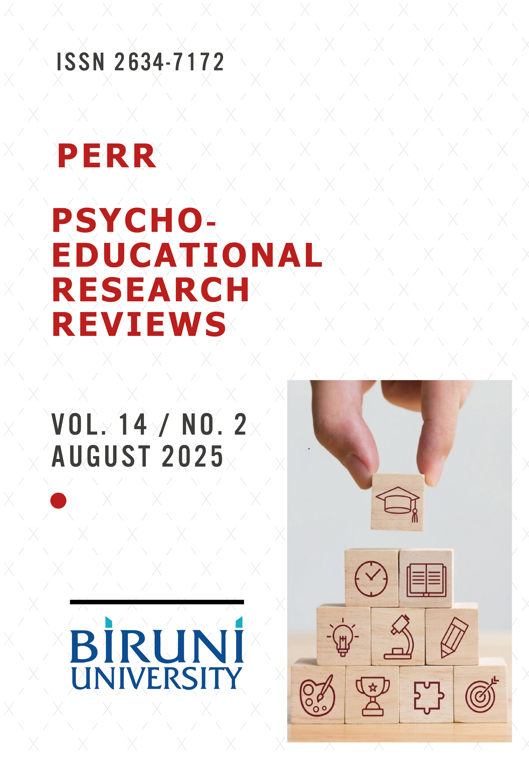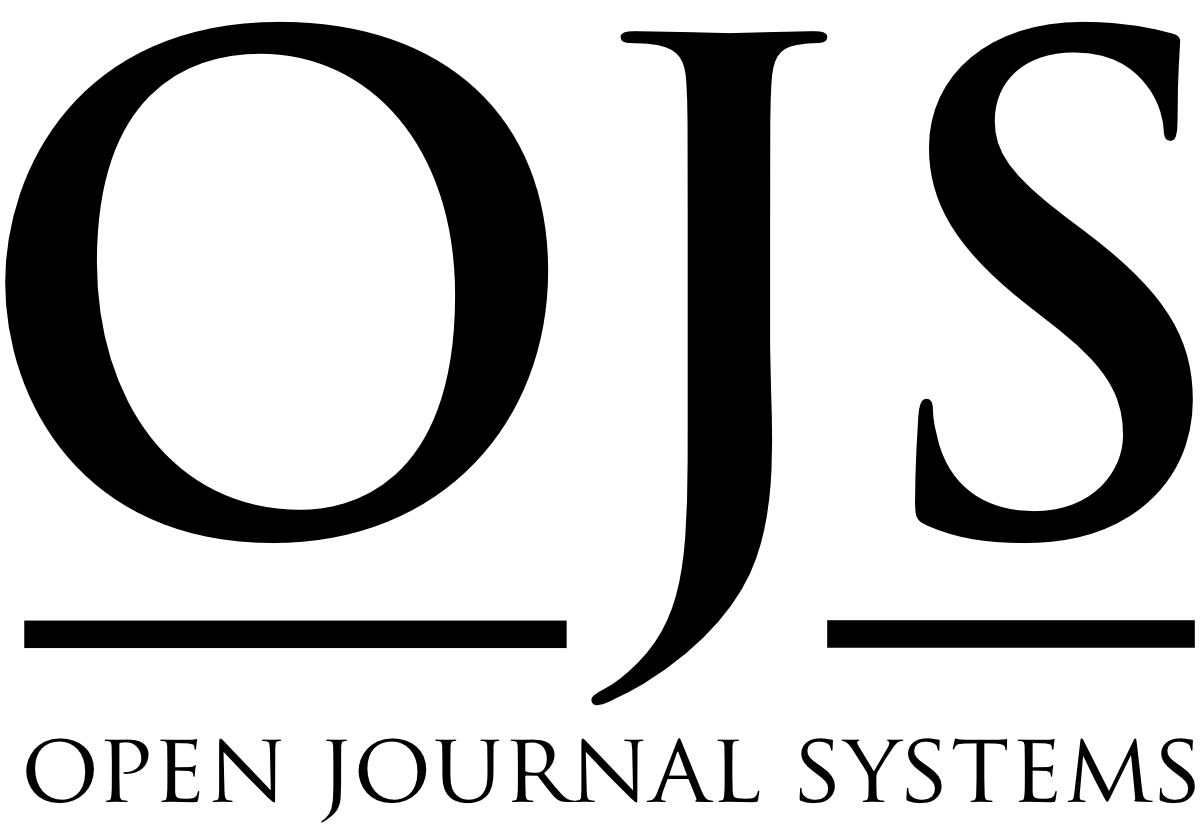Navigating Time Through Space: The Role of Spatial Frames of Reference in Spatial and Temporal Perception in Virtual Reality
DOI:
https://doi.org/10.52963/PERR_Biruni_V14.N2.01Keywords:
Virtual Reality (VR), Spatial Frames of Reference, Time Perception, Spatial Perception, Content EventfulnessAbstract
This study investigated the intricate relationship between spatial frames of reference (egocentric, or self-centered, versus allocentric, or environment-centered) and content eventfulness on subjective time perception within virtual reality (VR) environments. Additionally, it examined how prior VR experience might influence the sense of spatial presence. Seventy-nine participants were recruited to view four 360° VR videos, each systematically manipulated for spatial frame of reference (first-person egocentric vs. third-person allocentric) and content eventfulness (dynamic/narrative vs. neutral/ambient scenes) in a 2x2 within-subjects design. Participants then ranked these videos by perceived duration and completed a modified spatial presence questionnaire. The findings indicated that participants reported a strong sense of spatial presence, particularly for object/people presence and sound localization, confirming the immersive setup's effectiveness. However, tactile engagement received lower ratings. Crucially, prior VR experience did not significantly affect participants' perceived spatial presence. Regarding time perception, allocentric videos, especially those with eventful content, were more frequently perceived as longer in duration. Conversely, egocentric videos, particularly the uneventful ones, were consistently perceived as shorter, with the egocentric-uneventful condition demonstrating a statistically significant compression of perceived duration. This suggests that egocentric framing might compress subjective time, possibly by enhancing embodiment. The study also clarified that the presentation order of the videos did not significantly influence temporal judgments. This research highlights the complex interaction between spatial framing and content in shaping time perception in immersive environments, reinforcing the idea that space and time are deeply interdependent in human cognition.
Downloads
References
Bratzke, D., Peris, L., & Ulrich, R. (2023). Time and visual-spatial illusions: Evidence for cross-dimensional interference between duration and illusory size. Attention, Perception, & Psychophysics. Advance online publication. https://doi.org/10.3758/s13414-023-02737-x
Burr, D., & Morrone, C. (2006). Time perception: Space–time in the brain. Current Biology, 16(5), R171–R173. https://doi.org/10.1016/j.cub.2006.02.038
Carrasco, M. (2018). How visual spatial attention alters perception. Cognitive Processing, 19(S1), 89–101. https://doi.org/10.1007/s10339-018-0889-7
Committeri, G., Galati, G., Paradis, A., Pizzamiglio, L., Berthoz, A., & LeBihan, D. (2004). Reference frames for spatial cognition: Different brain areas are involved in viewer-, object-, and landmark-centered judgments about object location. Journal of Cognitive Neuroscience, 16(9), 1517–1535. https://doi.org/10.1162/0898929042568550
Coull, J. T., & Nobre, A. C. (1998). Where and when to pay attention: The neural systems for directing attention to spatial locations and to time intervals as revealed by both PET and fMRI. The Journal of Neuroscience, 18(18), 7426–7435. https://doi.org/10.1523/JNEUROSCI.18-18-07426.1998
Coull, J. T., Frith, C. D., Büchel, C., & Nobre, A. C. (2000). Orienting attention in time: Behavioural and neuroanatomical distinction between exogenous and endogenous shifts. Neuropsychologia, 38(6), 808–819. https://doi.org/10.1016/S0028-3932(99)00132-3
Conway, L. G., Repke, M. A., & Houck, S. C. (2016). Psychological spacetime. SAGE Open, 6(4), Article 215824401667451. https://doi.org/10.1177/2158244016674511
Di Lernia, D., Serino, S., Pezzulo, G., Pedroli, E., Cipresso, P., & Riva, G. (2018). Feel the time: Time perception as a function of interoceptive processing. Frontiers in Human Neuroscience, 12, Article 74. https://doi.org/10.3389/fnhum.2018.00074
Goodale, M. A., & Milner, A. D. (1992). Separate visual pathways for perception and action. Trends in Neurosciences, 15(1), 20–25. https://doi.org/10.1016/0166-2236(92)90344-8
Gorisse, G., Christmann, O., Amato, E. A., & Richir, S. (2017). First- and third-person perspectives in immersive virtual environments: Presence and performance analysis of embodied users. Frontiers in Robotics and AI, 4, Article 33. https://doi.org/10.3389/frobt.2017.00033,
Iachini, T., Ruotolo, F., Rapuano, M., Sbordone, F. L., & Ruggiero, G. (2023). The role of temporal order in egocentric and allocentric spatial representations. Journal of Clinical Medicine, 12(3), 1132. https://doi.org/10.3390/jcm12031132
Lombard, M., Bolmarcich, T., & Weinstein, L. (2009, January). Measuring presence: The Temple Presence Inventory. https://matthewlombard.com/research/tpi/
Robinson, E., Michaelis, K., Thompson, J. C., & Wiener, M. (2019). Temporal and spatial discounting are distinct in humans. Cognition, 190, 212–220. https://doi.org/10.1016/j.cognition.2019.04.030
Ruotolo, F., Ruggiero, G., Raemaekers, M., Iachini, T., van der Ham, I. J. M., Fracasso, A., & Postma, A. (2019). Neural correlates of egocentric and allocentric frames of reference combined with metric and non-metric spatial relations. Neuroscience, 409, 235–252. https://doi.org/10.1016/j.neuroscience.2019.04.021
Saj, A., Fuhrman, O., Vuilleumier, P., & Boroditsky, L. (2013). Patients with left spatial neglect also neglect the “left side” of Time. Psychological Science, 25(1), 207–214. https://doi.org/10.1177/0956797612475222
Slater, M., & Wilbur, S. (1997). A framework for immersive virtual environments (FIVE): Speculations on the role of presence in virtual environments. Presence: Teleoperators and Virtual Environments, 6(6), 603–616. https://doi.org/10.1162/pres.1997.6.6.603
Stojić, S., Topić, V., & Nádasdy, Z. (2023). Children and adults rely on different heuristics for estimation of durations. Scientific Reports, 13, Article 1186. https://doi.org/10.1038/s41598-023-27419-4
Verde, L. L., Alais, D., Burr, D. C., Morrone, M. C., MacDougall, H., & Verstraten, F. A. (2019). Time dilation effect in an active observer and virtual environment requires apparent motion: No dilation for retinal- or world-motion alone. Journal of Vision, 19(3), Article 4. https://doi.org/10.1167/19.3.4
Volcic, R., & Kappers, A. M. L. (2008). Allocentric and egocentric reference frames in the processing of three-dimensional haptic space. Experimental Brain Research, 188(2), 199–213. https://doi.org/10.1007/s00221-008-1353-5
Wade, N. J., & Swanston, M. T. (2013). Visual perception: An introduction (3rd ed.). Routledge.
Whitaker MM, Hansen RC, Creem-Regehr SH, Stefanucci JK. The relationship between space and time perception: A registered replication of Casasanto and Boroditsky (2008). Atten Percept Psychophys. 2022 Feb;84(2):347-351. doi: 10.3758/s13414-021-02420-z. Epub 2022 Feb 16. PMID: 35174467.
Whitwell, R. L., Milner, A. D., & Goodale, M. A. (2014). The two visual systems hypothesis: New challenges and insights from visual form agnosic patient DF. Frontiers in Neurology, 5, Article 255. https://doi.org/10.3389/fneur.2014.00255
Wittmann, M. (2009). The inner experience of time. Philosophical Transactions of the Royal Society B: Biological Sciences, 364(1525), 1955–1967. https://doi.org/10.1098/rstb.2009.0003
Zaehle, T., Jordan, K., Wüstenberg, T., Baudewig, J., Dechent, P., & Mast, F. W. (2007). The neural basis of the egocentric and allocentric spatial frame of reference. Brain Research, 1137, 92–103. https://doi.org/10.1016/j.brainres.2006.12.044
Zheng, L., Dobroschke, J.-G., & Pollmann, S. (2021). Egocentric and allocentric reference frames can flexibly support contextual cueing. Frontiers in Psychology, 12, Article 711890. https://doi.org/10.3389/fpsyg.2021.711890
Additional Files
Published
How to Cite
Issue
Section
License
Copyright (c) 2025 Psycho-Educational Research Reviews

This work is licensed under a Creative Commons Attribution-NonCommercial-NoDerivatives 4.0 International License.










